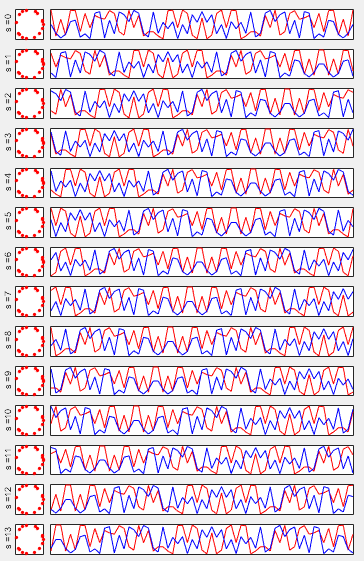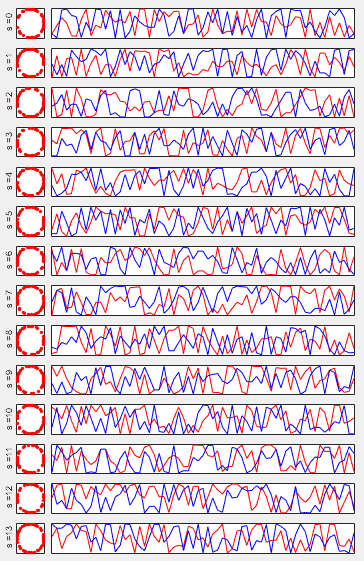|
5G/NR - Pre Trial - Physical Signal - ESS |
|||||||||||
|
NOTE : This note is about a tempary 5G specification that was implemented and tried before 5G specification is finalized. I keep this note for study purpose.
ESS (Extended Synchronization Signal)
ESS is something that is not in LTE. Main purpose of ESS is to uniquely identify the symbol number within the subframe.
Baseband Signal Generation
Disclaimer : This code is just to push myself (probably readers) to look into the algorithm (formula) specified in the specification to the most detailed level. If you try to convert the specification into the programming code whatever language you choose, you will understand the equation / algorithm in much more detailed level than just reading the document. However, this code has not been verified with any real data.
RE Mapping(Resource Element Mapping) of ESS
If you cut out only subframe 0 and maginify the resource elements below PSS, it looks as shown below. ESS is transmitted in symbol 0-13 in subframes 0 and 25. It is defined in 211-6.8.3 Extended synchronization signal. It is made up of 62 data based on Zadoff-Chu sequence and occupy 62 subcarriers, but in resource allocation total 72 sub carrier (6 RB) is allocated for the ESS. It means 5 sub carriers on both side of ESS is reserved (not used) as a kind of gap. The ESS is transmitted in all OFDM symbols. This is because Network in PreTrial is transmitting ESS for 14 different antenna ports as indicated below.
Matlab Code : ESS
|
|||||||||||



